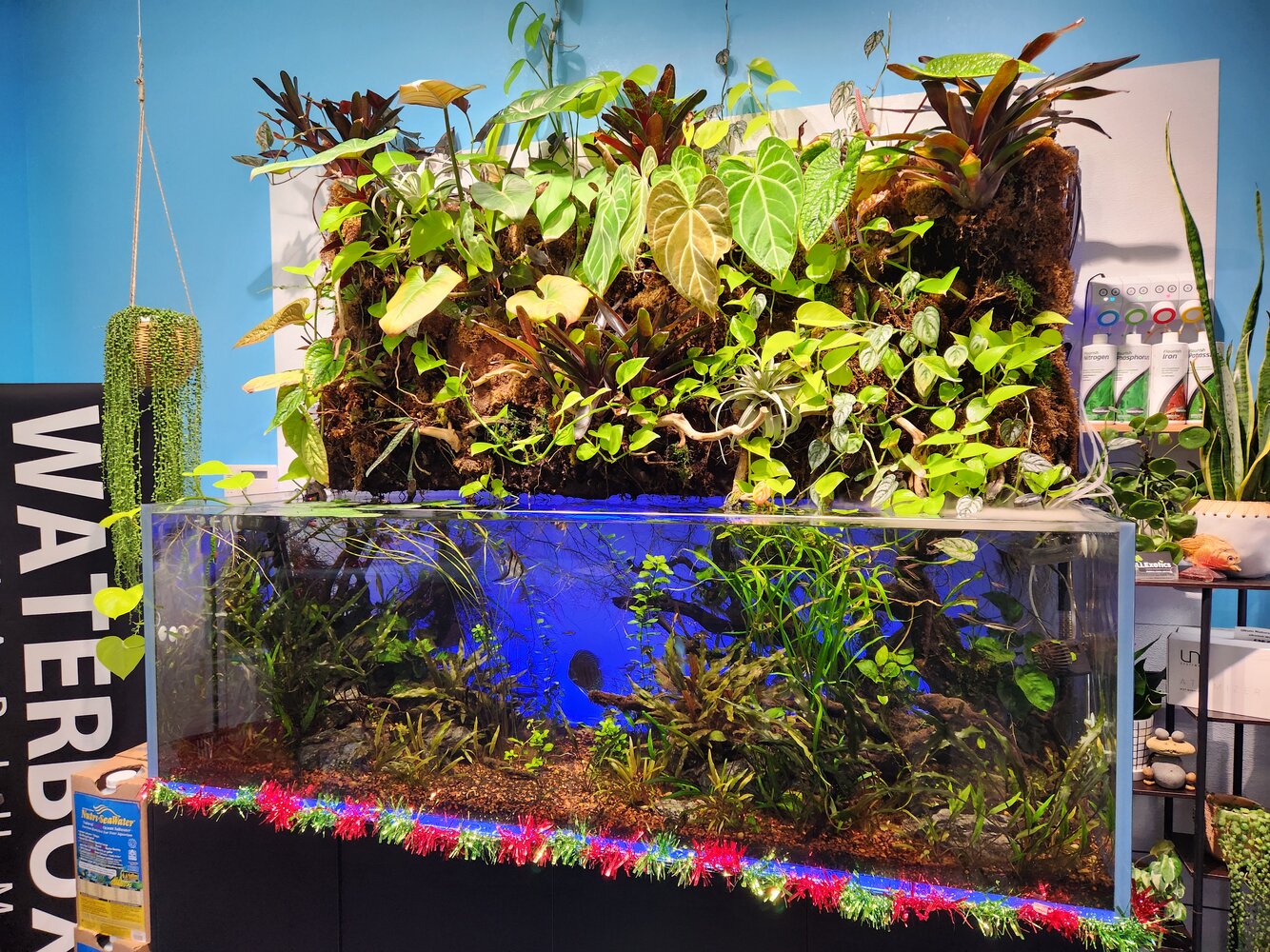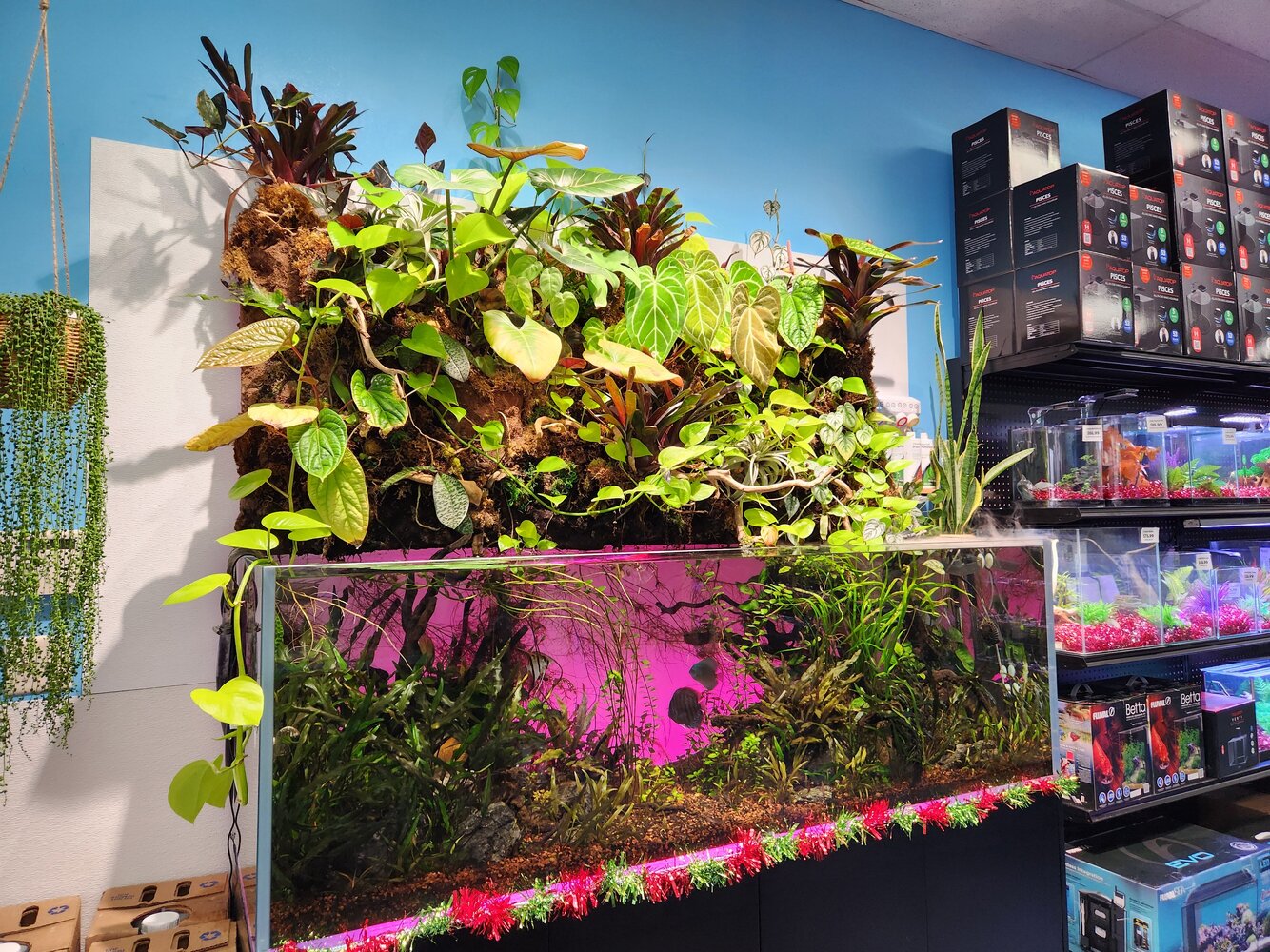hydrophyte
Member
- Joined
- 22 Aug 2009
- Messages
- 1,077
Vertical Garden Projects
I've been working on a few wall-mount vertical projects. While these are not aquariums, some of them incorporate aquatic Cyanobacteria as living biocrusts or phytoplankton in a water medium.
This clay panel living wall display in a 11.5" X 4" X 21" case has been in development for about nine months. The upper portion is more subject to drying, but has grown a nice textured biocrust of Anabaena and Tolypothrix Cyanobacteria. The lower area holds moisture better and grows a green turf of Mosses, a Liverwort, a few Ferns and Peperomia. The setup requires near-daily hand watering, but is otherwise very easy-care.

With time, the clay surface develops more and more texture and visual interest.

Here's an early build photo. The clay is pressed into an industrial scrub pad, which holds it holds it all together while also checking shrinkage cracks.

I've been working on a few wall-mount vertical projects. While these are not aquariums, some of them incorporate aquatic Cyanobacteria as living biocrusts or phytoplankton in a water medium.
This clay panel living wall display in a 11.5" X 4" X 21" case has been in development for about nine months. The upper portion is more subject to drying, but has grown a nice textured biocrust of Anabaena and Tolypothrix Cyanobacteria. The lower area holds moisture better and grows a green turf of Mosses, a Liverwort, a few Ferns and Peperomia. The setup requires near-daily hand watering, but is otherwise very easy-care.

With time, the clay surface develops more and more texture and visual interest.

Here's an early build photo. The clay is pressed into an industrial scrub pad, which holds it holds it all together while also checking shrinkage cracks.


















































